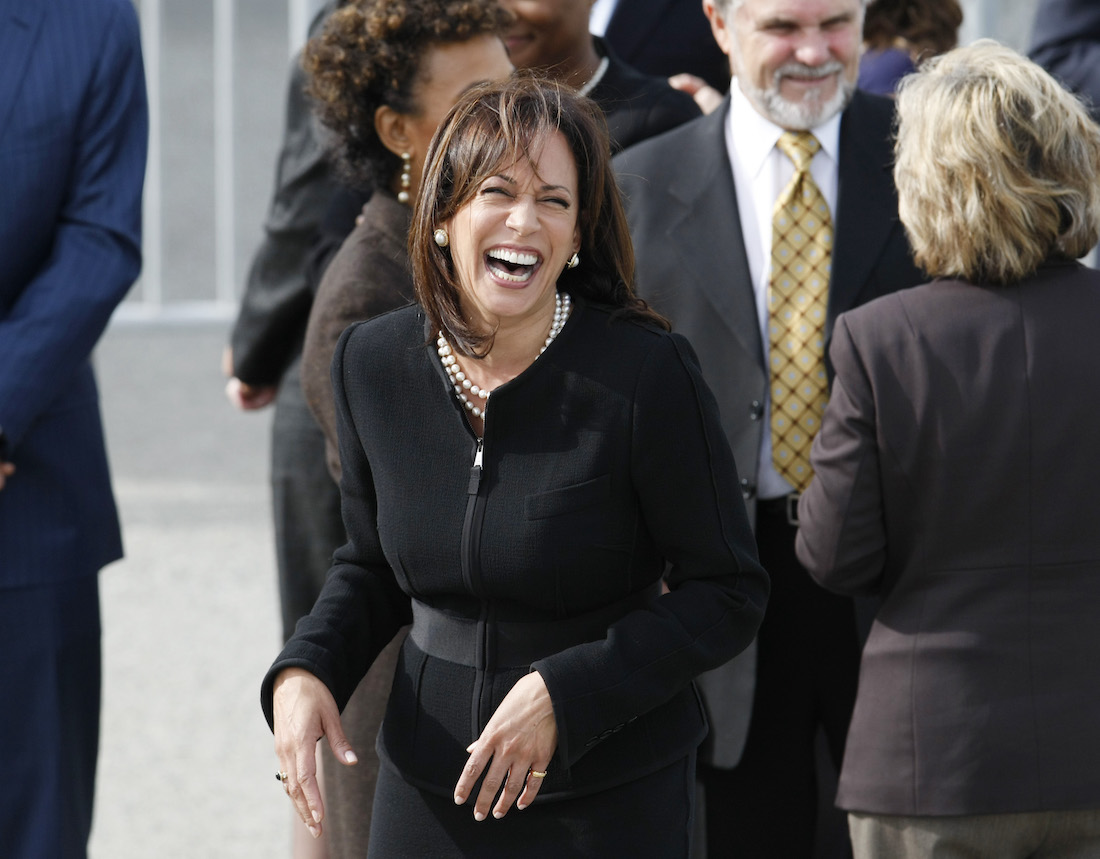Last Friday, Vice President Kamala Harris raised the plight of harried parents dealing with the life dislocation of children being locked out of in-person education in the public schools – and erupted in gales of inappropriate laughter. Parents at their wits’ end and children whose mental health and cognitive skills are deteriorating may find more sober wisdom in a new report that explains the precise factor that determines whether teachers unions will succeed in denying students in-person education.
The most important single item that decides whether schools will open their doors to students is a generous, restrictive, union-negotiated contract, the report finds.
“Even in times of unprecedented uncertainty, our local-level education policy decisions regarding how to educate students gravitate towards power and politics,” the study’s authors find. “[A]s our school districts prioritize special interests, they may become less representative and less responsive to community needs.”
A team of researchers from the University of Nevada in Las Vegas and Michigan State University tracked the decisions of 250 school districts about reopening in person throughout the fall of 2020. Like numerous other studies, they found the power of a strong teachers unions – like the National Education Association or the American Federation of Teachers – made the difference.
Researchers found a one-to-one relationship between the percentage of residents who voted for President Donald Trump in the 2020 election and the likelihood of beginning the 2020 academic year with in-person instruction. Meanwhile, they “no significant relationship” between COVID-19 hospitalization rates and education.
Corey DeAngelis pointed out on Twitter that five previous studies have come to the same conclusion, including:
- DeAngelis & Makridis (2020);
- Hartney & Finger (2020);
- Flanders (2020);
- Harris, et al. (2021); and
- Grossman, et al. (2021).
The new report expands on previous studies, which focused on decisions made at the beginning of the semester by examining whether the district ever returned to in-person learning.
The most unique contribution came from examining the kinds of power exercised by teachers unions. The team, led by Bradley D. Marianno, delved into the distinction between what they called “first face power” and “second face power”: First face power means union opposition to in-person instruction, measured by official statements and protests. Second face power measures how restrictive a union’s collective bargaining agreement is with the local school board.
Ironically, the study found the greater the public union opposition (“first face power”), the more likely the school district was to have in-person education. This may show that voters put their own children’s well-being ahead of teachers’ requests.
But researchers concluded the more restrictive a union’s collective bargaining agreement, the lower the likelihood of “ever” resuming in-person schooling. This kind of structural power shows that unions can directly affect school boards – to a greater degree than parents. The study states:
We find that school districts in which teachers’ unions exhibit strong second face power were less likely to open for in-person instruction at the start of the fall semester, were less likely to ever open during fall semester for in-person instruction, and spent more weeks in remote learning. We further find that teachers’ union first face power was positively related to opening for in-person instruction during fall semester and not associated with a return to remote instruction after the initiation of a hybrid or in-person return. We conclude that second face power is more predictive of reopening decisions that are in alignment with teachers’ union preferences and that first face union power may be a reactionary response to school districts’ decisions that is not sufficient for altogether preventing in-person instruction from taking place.
The authors say their findings “should lead us to scrutinize whether our local educational governance systems are properly calibrated to protect and promote student interests over and above special interests.”
Vice President Harris opened that debate afresh after video surfaced of her seemingly laughing that parents are more likely to support expensive contracts for teachers unions after seeing their children deprived of traditional schooling. “More parents are seeing the value of educators when they (laughing) had to bring their kids [home] and say, ‘We’re not paying them nearly enough’ (laughing),” she said.
Meanwhile, there is little assurance that the Biden administration will change the status quo. Secretary of Education Miguel Cardona told MSNBC last Wednesday that “it’s premature to tell” whether schools can reopen for in-person learning next fall – at the start of the 2021-2022 school year.
The administration has downplayed studies showing the safety of reopening schools, insisting that teachers need additional resources before being ordered into the classroom. However, teachers in Oakland, California, refused to return to in-person instruction before their mandatory start date of April 14 – even after they received the COVID-19 vaccine as a state priority and were offered cash incentives.
This study shows that parents whose children have been locked out of the classroom for months, or a year, should not want their school boards to adopt a long, restrictive union contract.
Why are schools closed? Unions and partisanship, study finds
Your child’s misery is a price the NEA is willing to pay
The forgotten child: Pandemic policies are leaving kids behind
Chicago’s teacher standoff shows the injustice of public-sector unions
13,000 children are being denied an education over a funding fight
‘Education Reimagined’: West Virginia’s quest for school choice
As children thrive at charter schools, progressives threaten their future
